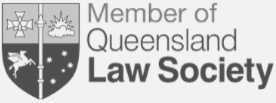Children’s obesity rates in Australia: eMJA
The e Medical Journal of Australia has published the following letter:
Childhood overweight and obesity by Socio-Economic Indexes for Areas
Mu Li, Karen Byth and Creswell J Eastman
MJA 2007; 187 (3): 195
To the Editor: Childhood overweight and obesity have become a major public health concern in Australia. Between July 2003 and December 2004, we conducted the Australian National Iodine Nutrition Study (NINS) among schoolchildren.1 While visiting primary schools across Australia, we observed that many children were overweight or obese. The NINS data allowed us to estimate the prevalence of overweight and obesity among 8–10-year-old Australian schoolchildren, and to determine whether the prevalence was associated with socioeconomic background.
The study population comprised a one-stage random-cluster sample from all Year 4 school classes in 92 government and non-government schools.1
Children were aged 8–10 years (mean, 9.3 years). Height and weight were measured by standard techniques and were used to calculate body mass index. Overweight and obesity were identified using international standard definitions.2 Socioeconomic status was defined by the Index of Relative Socio-Economic Advantage/Disadvantage of the Census of Population and Housing’s Socio-Economic Indexes for Areas (postal areas).3 This index is a continuum of advantage to disadvantage. A higher score indicates that an area has a relatively higher proportion of people with higher incomes or a skilled workforce.
The prevalence of overweight and obesity in 8–10-year-old schoolchildren was 18.5% and 6.5%, respectively. There was no significant sex difference in prevalence and no significant evidence of an association between socioeconomic status and overweight or obesity (Box).
The prevalence of overweight and obesity combined and of obesity alone was similar to previously reported prevalence,4,5 although the age range of the participants was more limited than in other studies. We minimised measurement error bias by using the same equipment throughout, in the same setting. Furthermore, most measurements were taken by the same person. We could not demonstrate an association between socioeconomic status and the prevalence of overweight and obesity combined, or of obesity alone. This suggests that childhood overweight and obesity is common to all Australian communities, irrespective of socioeconomic background.
Preventing overweight and obesity in children may reduce the risk of adult overweight and obesity and related diseases. Regular monitoring and surveillance of the situation is needed. Australia is one of the first countries in the world to develop a national strategy for overweight and obesity.6 However, the strategy needs to be communicated to the wider community and turned into action to combat this public health problem.
Proportion (number) of boys and girls categorised as overweight or obese by index of advantage/disadvantage*
SEIFA percentile
Not overweight or obese
——————————————————————————–
Overweight
——————————————————————————–
Obese
——————————————————————————–
n
Overall
Boys
Girls
Overall
Boys
Girls
Overall
Boys
Girls
——————————————————————————–
Lowest 10
130
79% (102)
77% (56)
82% (46)
12% (16)
12% (9)
13% (7)
9% (11)
11% (8)
5% (3)
10–25
286
72% (207)
72% (103)
73% (103)
22% (64)
22% (31)
23% (33)
5% (15)
6% (9)
4% (6)
25–50
210
74% (156)
72% (72)
76% (84)
17% (35)
18% (18)
16% (17)
9% (19)
10% (10)
8% (9)
50–75
505
75% (379)
72% (183)
79% (195)
19% (98)
21% (53)
18% (45)
6% (28)
8% (20)
3% (8)
75–90
427
75% (319)
78% (179)
71% (140)
18% (78)
17% (39)
20% (39)
7% (30)
6% (13)
9% (17)
Highest 10
225
77% (174)
79% (84)
76% (89)
17% (39)
16% (17)
19% (22)
5% (12)
6% (6)
5% (6)
Total
1782
75.0% (1337)
74.4% (677)
75.6% (657)
18.5% (330)
18.4% (167)
18.8% (163)
6.5% (115)
7.3% (66)
5.6% (49)
——————————————————————————–
* Overall χ2 = 11.42, P = 0.33; Boys χ2 = 8.73, P = 0.56; Girls χ2 = 12.36, P = 0.26. SEIFA = Socio-Economic Indexes for Areas (a higher score corresponds to higher socioeconomic status).
Acknowledgements: We thank all who contributed to the Australian National Iodine Nutrition Study.
Mu Li, Senior Lecturer1
Karen Byth, Biostatistician2
Creswell J Eastman, Professor1
1 School of Public Health, University of Sydney, Sydney, NSW.
2 Westmead Millennium Institute, Sydney, NSW.
muliAThealth.usyd.edu.au
Li M, Eastman CJ, Waite KV, et al. Are Australians iodine deficient? Results of the Australian National Iodine Nutrition Study. Med J Aust 2006; 184: 165-169. Cole TJ, Bellizzi MC, Flegal KM, Dietz WH. Establishing a standard definition for child overweight and obesity worldwide: international survey. BMJ 2000; 320: 1240-1243. Australian Bureau of Statistics. Information paper. Census of Population and Housing. Socio-economic indexes for areas, Australia, 2001. Canberra: ABS, 2003. http://www.ausstats.abs.gov.au/ausstats/free.nsf/0/AFF5E8542B58B94ECA256DD5007A3DF8/$File/20390_2001.pdf (accessed Aug 2007)
Booth ML, Wake M, Armstrong T, et al. The epidemiology of overweight and obesity among Australian children and adolescents, 1995-1997. Aust N Z J Public Health 2001; 25: 162-169. Magarey AM, Daniels LA, Boulton TJC. Prevalence of overweight and obesity in Australian children and adolescents: reassessment of 1985 and 1995 data against new standard international definitions. Med J Aust 2001; 174: 561-564. Baur LA. Obesity: definitely a growing concern [editorial]. Med J Aust 2001; 174: 553-554.











